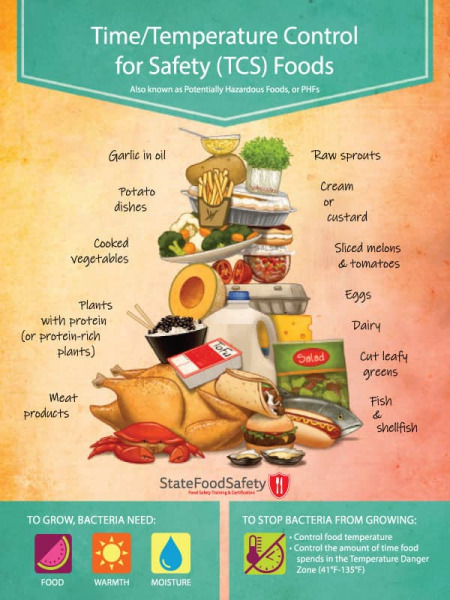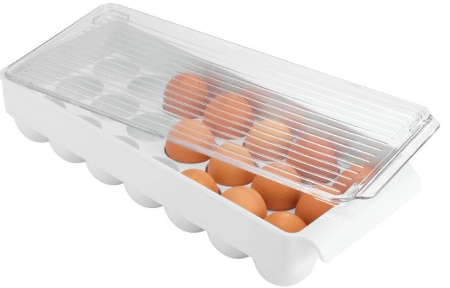It’s a groggy Monday morning, and I’m fishing through my fridge for something edible to start my breakfast.
“Alexa, how long does yogurt last past the expiration date?” I mutter to my Amazon Echo device, as I pick up a cup of Chobani that’s been hiding in the back since last year.
With a familiar air of condemnation in her voice, Alexa tells me that I shouldn’t eat yogurt past the expiration date. Somehow, I expected her answer to have changed since the last time I asked that question, merely a few days before.
I eat the yogurt anyway.
As most of my friends have observed directly, my refrigerator is a living science project. If you rummage around, you’ll probably find several varieties of antibiotics that would make Alexander Fleming’s bacteriology look pretty amateur. I vow that someday, this shrine of spoiled food will contain the cure for some virulent infection; but for now, it’s simply emblematic of the entropy that defines my life.
You may be wondering, “Seriously, how hard is it to throw away spoiled food?” The answer is, well, that’s a mission that somehow terrifies me. It’d be like navigating the ominous Dark Web of food preservation. Plus, despite what my overly critical Echo companion advises, I eat expired food all the time and haven’t yet gotten sick.
One Maryland family ate “expired” food for a year to make a point — and yes, they lived to tell about it. https://t.co/79nANZjMGQ
— WTOP (@WTOP) February 22, 2019
And then yesterday, a friend texted me in all caps, “BEWARE OF LEFTOVERS!!” with a link to a harrowing story: an article in People magazine with the clickbait title, “Man Has Legs and Fingers Amputated After Eating Leftover Noodles and Suffering Organ Failure.” Now, I realize that People isn’t the pinnacle of upstanding journalism, but it turns out, the case was first featured in the widely respected New England Journal of Medicine, which confirmed the kitchen nightmare. A 19-year-old really did end up in the ICU, and ultimately the operating room, “after he ate rice, chicken, and lo mein leftovers from a restaurant meal.”
Of course, it’s not clear how long said lo mein leftovers had been lying around before their fateful consumption, but it doesn’t matter — the horrific tale was enough to inspire my own personal sea change in how I approach the preservation of foods.
That’s right, no more tossing my takeout haphazardly on a crammed up shelf; no more nonchalance when it comes to properly storing my produce. If I’m destined to someday lose my limbs, it’s not going to be over some moldy meat.
Mold Getting Tired Of Thanksgiving Leftovers https://t.co/u3qkGOAKkB pic.twitter.com/LG0Cf3Ow3Y
— The Onion (@TheOnion) December 4, 2020
That being said, the solution isn’t as simple as disposing of my groceries before they have the chance to make me sick. Here at Monet, we’re committed to sustainability, so increasing my food waste was never an option. Instead, my mission became to optimize how I store food so that it doesn’t spoil so quickly in the first place. And as a novice in the kitchen with no knack for organization, I sought out to gather wisdom from the pros.
We’re trying this ADHD hack from TikTok where you put all your produce in your fridge door and your condiments in your drawers. Trying to cut our food waste, gotta keep things where I can see them. pic.twitter.com/K4PRcLuhrm
— ashley fairbanks (@ziibiing) August 3, 2021
Spoiler alert: it’s really not that complicated; just a little revamping can go a long way. Plus, flipping your refrigerator can be a fun science project to do with your kids! Here, find some savvy, tried-and-true tricks to transform your fridge into a bastion of freshness — instead of a mecca for mold.
What To Refrigerate
The first step in optimizing your food storage, of course, is to know which foods belong in the refrigerator. According to food safety scientists, all time/temperature control for safety (TCS) foods — that is, foods that have a high level of carbohydrate or protein, are neutral or slightly acidic, and contain moisture — require refrigeration at or below 40°F to prevent pathogen growth. TCS foods include milk and milk products, like cheese and yogurt; eggs; meat, poultry, fish, and shellfish; cooked foods like vegetables, rice, and potatoes; raw sprouts and cut leafy greens; cut melons; cut tomatoes; and garlic in oil. If left in the “temperature danger zone” (41° to 135°F) for too long, these foods become a playground for pathogens and may be dangerous to eat.
Once you’ve removed something from the fridge, follow the FDA’s two-hour rule for a bacteria-free buffet: discard any TCS foods that have been left at room temperature for more than two hours. There are plenty of other ways to prevent perishable food waste, which we’ll jump to next.
Where To Refrigerate
Pro tip: Organizing your fridge should not look like playing a high-stakes game of Tetris (or, if you’re me, a precarious game of Jenga with collapsing towers). As it turns out, there’s actually some science to storing your food products for optimum safety.
As a basic rule, you should arrange your refrigerated items by cooking temperature, with foods that require the lowest cooking temperature (ready-to-eat foods, leftovers) at the top, and foods that require the highest cooking temperature (poultry, meat) at the bottom. That way, if you spill something from the top shelf onto the lower shelves, any bacteria leaked onto the bottom foods will be killed when it’s cooked. Conversely, harmful bacteria from the raw foods cannot leak onto and contaminate your snacking foods.
Plus, the bottom shelves tend to be the coldest part of the fridge, so meat and fish will keep the longest if they’re stored there, explains Nancy Traylor, a home organization expert. That’s because, “like any space in your home, warm air rises,” she says.
But contrary to what you might think, the warmest part of your refrigerator isn’t the top shelf — it’s actually the door, because air flows in every time you open your fridge. “The best thing to store there are the least perishable items like condiments and drinks,” Traylor says.
“A lot of people store their milk and eggs in the door. I recommend avoiding that and, instead, opting to store dairy on the lower shelves, where it will be cooler,” she recommends.
And what about fruits and vegetables? Well, that’s what your crisper drawers are for, of course — they provide a high-humidity environment to keep your produce fresh. But “make a habit of storing fruits and vegetables in separate places,” advises Traylor. “Many fruits give off [a gas called] ethylene, which can cause vegetables to ripen more quickly.”
Also, leafy greens are especially prone to wilting and losing moisture, so they require even higher humidity than the rest of your produce. “To preserve leafy greens and herbs, either put a damp paper towel in their drawer, or snip off the ends and store upright in a glass of water on the top shelf. That way, they will stay fresher longer,” Traylor says.
One more tip: don’t overstuff your shelves! “Overfilling the refrigerator will speed up the spoilage rate,” explains Traylor. “To keep food fresh, air needs to be able to circulate freely throughout the refrigerator.”
How To Refrigerate
Now that you’ve mapped out where to store everything in your refrigerator, it’s time to consider how to store them. Personally, I’ve always dumped my leftovers into loose Ziploc baggies (cringe); I’ve even been known to slide an open can of Campbell’s soup, in its original aluminum, in between said baggies (double cringe).
At least, that was the old me. The new me has discovered the world of smart storage containers for your refrigerator and, trust me, these products make food preservation (and organization) a breeze.
From lazy susans to egg containers, and even avocado savers, here are the smart storage products we love to make your foods last longer and your life a lot easier.
Lazy Susan Rotating Turntable Food Storage Container
This dual set of rotating lazy Susans comes with two turntables for clear and easy access to all your refrigerator essentials. Each turntable is 9 inches in diameter, made of BPA-free and shatter-resistant plastic, and glides smoothly to prevent spills. Real 5-star review: “Perfect for storage of items in back of refrigerator. Nice lip to keep containers confined. Good quality.”
BINO Multi-Use Organizer Bins With Built-In Handles
These easy-access, pull-out bins fit neatly onto your refrigerator (or pantry) shelves to store more stuff in less space! Plus, the BPA-free bins are completely clear so you can view exactly what’s inside. Real 5-star review: “For $10, this exceeded my expectations. It’s exactly what it says it is, and the handle is a bit flexible but not anything that should break. Don’t overthink it.”
Utopia Set Of 6 Refrigerator Organizer
This six-piece set of refrigerator storage bins contains five large drawers and an egg tray for the most versatile organization station yet! The BPA-free plastic containers have pull-out handles for quick conveyance of your items. Real 5-star review: “I love these things so much. I just got my first apartment and it looked so messy in our little fridge, and now it looks really appealing and everything is easy to get to. The quality is so good. I’m honestly impressed; they’re very sturdy and the egg holder is so cute and holds 14 eggs!”
iDESGIN Fridge Binz Egg Holder
This BPA-free egg holder comes with a stackable design and protective lid to keep your eggs from cracking. The handy tray holds up to 21 eggs that you can pull out smoothly to snag an egg or restock. Real 5-star review: “Great design that helps to organize your fridge as well as prevent from breaking your eggs. You’re also able to stack on top of the eggs because of the hard top cover. The egg holder is easily cleaned with soap and water. You won’t be disappointed.”
Prepworks By Progressive Avocado Keeper
This stackable avocado saver helps your fruit stay firmer and fresher longer. The protective plastic slows down oxidation and is sturdy enough that your avocados won’t get squashed. Store your sliced snack cut-side down. Real 5-star review: “Have only tried it once, but kept my avocado nice and green for a couple of days. Compared to having a brown avocado after a few hours in plastic wrap, I’d say this is a winner.”

Have you successfully flipped your fridge? What storage strategies do you want to share? Let us know in the comments below!
Read These For More Ways To Clean And Organize Your Home:








